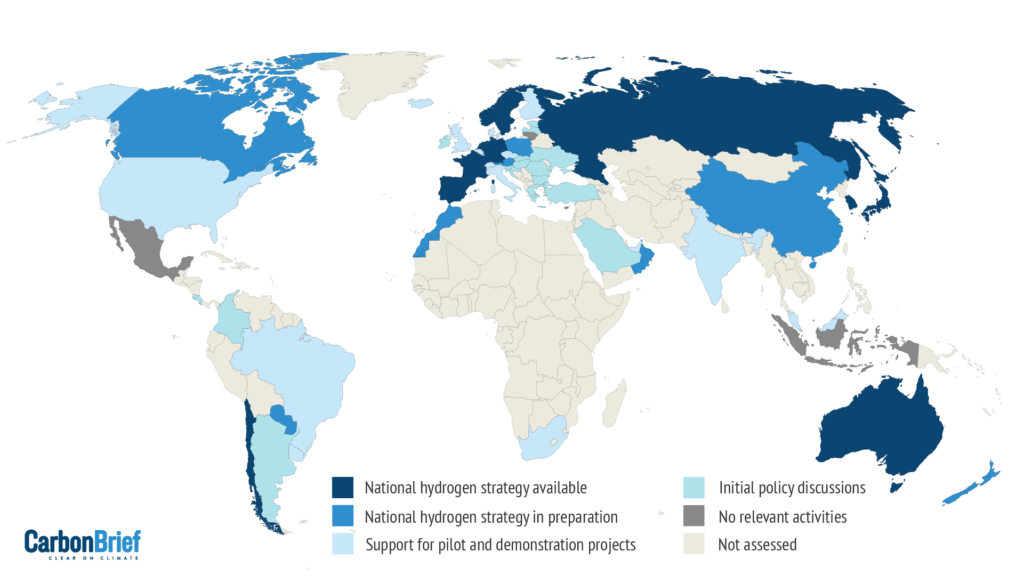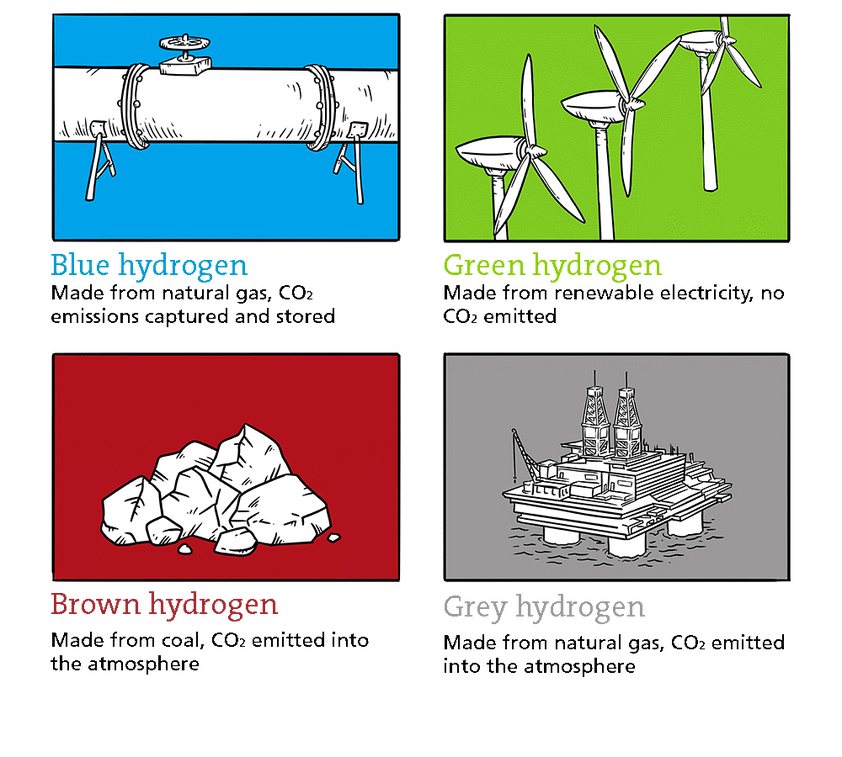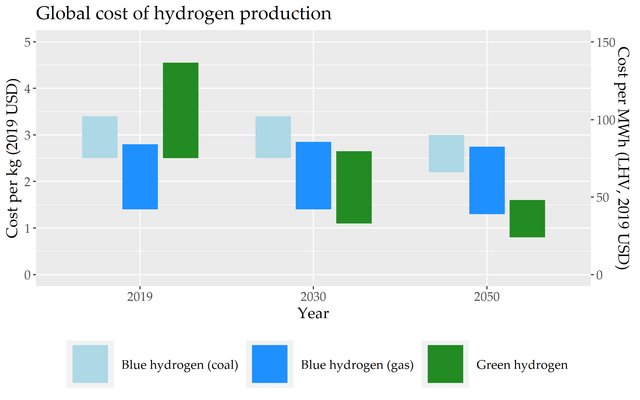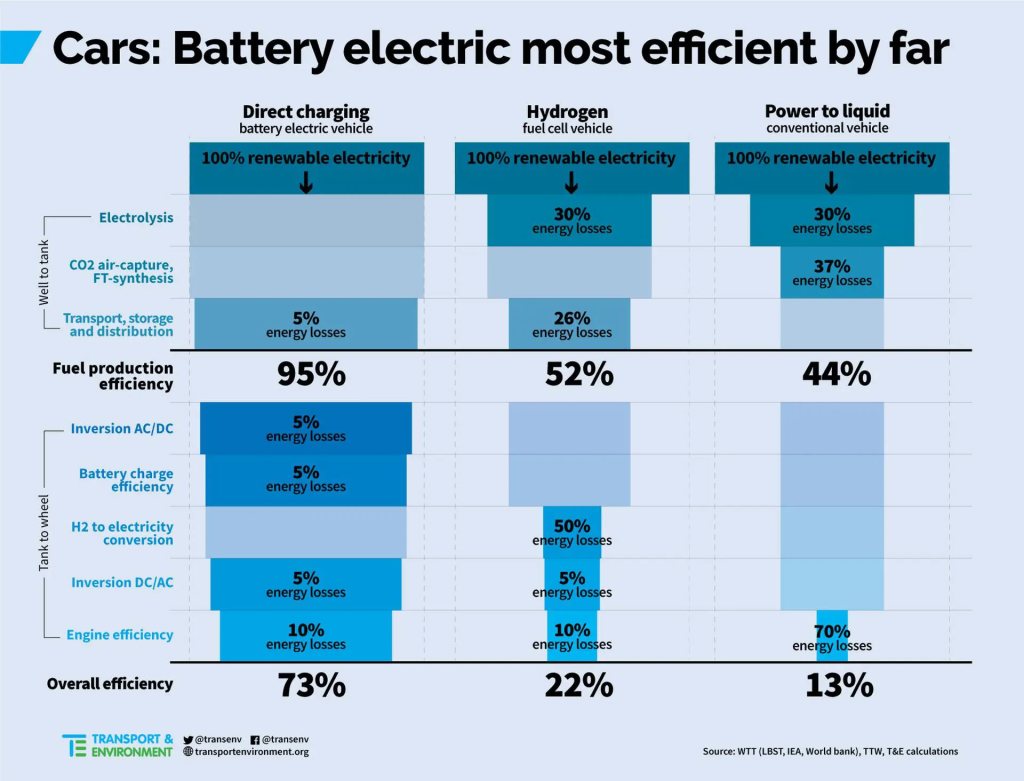For many years, fossil fuels have been providing electricity and heat to industry, transportation, and people. At the same time, the use of “dirty” fuels produces 73% of all greenhouse gas emissions in the world. Over 150 years, this has significantly exacerbated the greenhouse effect and led to a climate crisis.
To mitigate the effects and adapt to climate change, states are creating their own zero-emission strategies, including energy efficiency, ecosystem restoration, and renewable energy development. Countries from South Africa and the United Kingdom to Germany and Japan have set out on such an ambitious goal.
Now a new star, hydrogen, has exploded on the global stage of climate crisis solutions. Representatives of large industries and governments in many countries say it could be the key to decarbonizing the economy. But is it really so? Let’s check the answers from Ecoaction NGO.
Hydrogen Strategy, plans etc.
Last year was filled with announcements from governments and businesses about hydrogen development plans. Hydrogen energy has become a popular topic for discussion. Some already have the lasting impression that hydrogen is about to enter our daily lives and solve the problem of climate neutrality in all our carbon-intensive industries.

The level of hydrogen support in individual countries, including national strategies, pilot and demonstration projects, and policy discussions as of the end of 2020. Based on a report by Ludwig-Bölkow-Systemtechik GmbH and the German branch of the World Energy Council. Author: Joe Goodman, Carbon Brief
Interest in hydrogen production and use is growing rapidly among major oil and gas companies. And Europe plans to make hydrogen development one of the priorities of its Green Course, which will cost at least a trillion euros.
In July 2020, the European Union adopted its own Hydrogen Strategy.
However, the climate community is wary of this energy source. Because the impact of hydrogen on the climate depends entirely on how it is produced. In addition, in many cases, hydrogen technology is not very efficient compared to other available alternatives. Therefore, the public emphasizes that hydrogen policy should not shift the priority of governments to the course of energy efficiency and RES implementation.
So let’s understand from the beginning: what is hydrogen, where it can be used, what can be the challenges and pitfalls.
What kind of hydrogen is this?
Hydrogen is the most common element in the universe, although in its pure form in nature it is almost non-existent. It is found in water, hydrocarbons, and other organic compounds. Therefore, in order to use hydrogen as an energy source, the first challenge is to obtain it from these compounds.
Most hydrogen today is obtained from natural gas at those plants for which it is economically feasible. Hydrogen can also be obtained from water through an electrolysis process, but this requires significant water resources and electricity. In discussions about the development of the hydrogen economy, hydrogen is seen as an energy source that can be transported and stored, rather than as a major source of energy.
The list of main characteristics of hydrogen is as follows:
· Colorless gas;
· Odorless;
· Insoluble in water.
· The lightest of all gases has a high flammability range;
· It has a high energy density by weight, but a low density by volume compared to diesel or methane, so special methods and technologies are being developed for its storage.
History and modernity
It may seem that the hydrogen engine was invented recently. In fact, as early as 1820, William Cecil, a member of Magdalen College in Cambridge, described the operation of such an engine in his work. Decades later, in 1852, a working engine was built in Germany that ran on a mixture of hydrogen and air. In the twentieth century, hydrogen was used for the international transportation of passengers by airships, in internal combustion engines, in industry, and in liquid form as rocket fuel. Although the first hydrogen-powered car appeared in 1966, commercial sales of hydrogen cars around the world began only a few years ago.
Hydrogen is a universal energy source that can be produced from any energy resource. As of today, hydrogen is used mainly in the oil refining and chemical industries and is produced from fossil fuels with high associated greenhouse gas emissions. Currently, 6% of the world’s natural gas and 2% of coal is used for hydrogen production. As a result, hydrogen is responsible for emissions of about 830 million tons of carbon dioxide per year, which is equivalent to the CO2 emissions of the UK and Indonesia combined.
More than half of the hydrogen that boils vomits in the world, is used for the synthesis of ammonia, which is then directly or indirectly used as a fertilizer; a quarter – at refineries for the conversion of heavy crude oil into lighter fractions suitable for use as fuel; and another 10% for methanol production. At the same time, the demand for hydrogen in the world is growing, in particular with the growing demand for fertilizers.
Because the conversion of hydrogen into heat or electricity does not cause direct emissions of pollutants or emissions of carbon dioxide into the atmosphere, hydrogen is increasingly being referred to as a cleaner fuel than oil or gas.
That is why the number of countries supporting investments in hydrogen technology is increasing along with the number of sectors they target.
Not everyone is our friend in terms of color and taste

The main colors of hydrogen. Source: Energy Institute
We mentioned above that the impact of hydrogen on the climate depends entirely on how it is produced. Although it is transparent in itself, it has a number of “color” designations in the industry. The climate community notes that only green hydrogen is compatible with a climate-neutral future. Let’s see why!
Gray hydrogen is hydrogen produced using fossil fuels. It is usually obtained from natural gas in the process of energy combustion, which is known as steam methane reforming (SMR). In SMR, steam mixes with natural gas, which reacts with water vapor and splits the gas into carbon monoxide and hydrogen.
Less hydrogen is also produced from oil and coal. Sometimes this or any hydrogen obtained using fossil fuels can be called brown hydrogen.
These processes emit a significant amount of CO₂. As of 2018, gray hydrogen today accounts for about 95% of the world’s hydrogen production.
Blue hydrogen is hydrogen that corresponds to a low-carbon threshold but is generated using non-renewable energy sources such as natural gas. Natural gas is decarbonized using carbon capture, use and storage technologies during methane steam reforming. Public climate organizations believe that this approach to decarbonization is not sustainable. After all, it envisages the continued use of exhaustible energy resources, while diverting attention from the need for large-scale reduction of emissions in all sectors of the economy.
A recent addition to the hydrogen production palette is turquoise. This species is produced by the cleavage of methane into hydrogen and solid carbon by pyrolysis. Turquoise hydrogen may appear relatively stable in terms of emissions, as carbon can either be captured or used to produce steel or batteries. However, the above problems with the use of carbon capture technologies are relevant for this type of hydrogen. In addition, methane is a powerful greenhouse gas and any of its leaks are problematic in terms of climate impact.
Pink (or yellow) hydrogen is hydrogen produced by electrolyzers powered by electricity from nuclear power plants. Such hydrogen production has high risks and environmental consequences associated with the activities of nuclear energy. In some cases, hydrogen produced from any mixture of electricity is called “yellow”. Currently, fossil fuels are the main source of electricity in the world, so for many countries, yellow hydrogen may not be better than dirty “gray” or “brown”.
Green hydrogen is hydrogen that meets the low carbon threshold and is generated using renewable energy sources such as solar or wind. This is the best climate-friendly solution of all, especially now that the price of wind and solar energy is falling. So far, electrolysis produces a very small percentage of the world’s hydrogen as a by-product of chlorine production. As for green hydrogen, so far its production is limited to demonstration projects.
The Climate Action Network emphasizes that hydrogen colors or other general symbols (such as “low-carbon” or “pure” hydrogen) are confusing and should not be used at all. The hydrogen color gamut is constantly expanding and changing, so to ensure the transparency of the process, it is important to always talk about the origin of hydrogen, especially when it comes to adopting policies at the state level.
Note that in this text we use the term green hydrogen, which means the only hydrogen produced by electrolysis from sustainable renewable energy sources.
Is everything so simple using green hydrogen?
Electrolysis requires a lot of high quality water, electrolyzer (s) and electricity to produce large amounts of hydrogen. If electricity comes from renewable sources, the only carbon emissions are those related to the creation of infrastructure for production.
But there are obstacles to the rapid spread of green hydrogen technologies, here are just a few.
Price and capacity of cells. The main factor determining the cost of green hydrogen is the cost of electricity needed for its production, as well as the price of electrolyzers, which is still high. In the transport sector, fuel cell technologies are constrained by the high price of platinum, an important metal for fuel cell production.
Low efficiency of technologies. At all stages from production to transportation and use of green hydrogen, a significant amount of energy is lost. About one-third of energy is lost during electrolysis, the conversion of hydrogen into other carriers can lead to the loss of a quarter of the energy, transportation – another 10% of losses. When using hydrogen in fuel cells, losses can reach 50%. The greater the energy loss, the more RES capacity is needed to produce the required amount of hydrogen.
Availability of energy from renewable sources. Extensive and efficient development of green hydrogen requires a significant amount of renewable electricity, which may be a problem in the short term, as RES is already needed to decarbonize existing and future electricity demand.
Hydrogen storage and transportation. Because hydrogen density is much lower than gasoline, it is difficult and expensive to store and transport. To do this, the hydrogen must be cooled to -253˚C to be converted into a liquid and/or compressed to hundreds of times atmospheric pressure to be used as a compressed gas. During cryogenic storage, hydrogen has less weight, but liquefaction requires high energy consumption. Today, hydrogen is mainly produced near the place of its use, so the transport infrastructure is underdeveloped. The use of the world’s existing gas infrastructure to transport hydrogen also has its limitations.
The need for a large amount of purified water. To produce each ton of green hydrogen requires at least a few tons of water. We are talking about purified water, which usually requires additional electricity costs and, of course, the availability of water resources in sufficient quantities. We have already written that water scarcity can become a critical problem in the context of climate change for Ukraine and other countries. Already today Ukraine is one of the least supplied with drinking water in European countries. Therefore, increasing the load on water resources may be another limiting factor in the case of the active development of the hydrogen economy.
Green or golden hydrogen?
Virtually all modern global hydrogen production is carried out directly from fossil fuels. Electrolysis accounts for only 0.1% of the world’s specialized hydrogen production. Among the reasons is the cost of production, which is currently much lower if hydrogen is produced from coal or gas.

Bloomberg New Energy Finance’s optimistic forecast for the price of hydrogen production: blue – the price of “blue” hydrogen produced from coal using carbon retention and storage technologies; blue color – the price of “blue” hydrogen produced from natural gas using carbon retention and storage technologies; green color – the price of “green” hydrogen produced by electrolysis from renewable energy sources
Although hydrogen from renewable sources may become competitive, it is likely that it will be some time before it competes with hydrogen derived from fossil fuels. There are optimistic forecasts for lower green hydrogen prices over the next decade. They are due to the fact that the cost of electricity production from renewable sources is likely to continue to fall, the cost of electrolyzers will decrease if this market develops, and the price of greenhouse gas emissions will increase with the introduction of more ambitious climate policies in the world.
But the cost of production is not the only factor that shapes the final price for the consumer. Transportation costs, especially if hydrogen is imported, as well as the cost of transporting hydrogen within the country, value-added from companies, will also affect the price.
In general, according to experts, from the point of view of economics and energy, hydrogen of any color makes almost no sense. All the transformations that need to be carried out for its manufacture and use lead to excessive energy losses. The world started talking about hydrogen because to make the energy transition, we need to find a solution to the problem of variability in generation from renewable energy sources. And hydrogen technology is currently seen as one, though not the only, of such solutions.
Hydrogen is a modern oil and gas lobby
When politicians or businesses talk about the hydrogen economy and climate neutrality, most of us think about the development of green hydrogen produced from renewable energy sources. But some fossil fuel companies are proposing to start the transition to a hydrogen economy from gray or brown hydrogen. And only then switch to blue and green hydrogen, when carbon capture and storage technology and electrolyzers become cheaper. That is, they offer to wait and postpone climate action.
European economic experts say that in many cases, talking about hydrogen is just an excuse to continue using fossil fuels. Because hydrogen is similar in some properties to methane, it will allow oil companies to easily convert part of their infrastructure to hydrogen in the future. It is much easier and cheaper than shifting the focus of production to a new energy-efficient electrified economy based on renewable energy sources. Therefore, oil and gas producers are particularly interested in the distribution and use of hydrogen as a new allegedly “cleaner” or “low-carbon” fuel. However, they are promoting continued dependence on fossil fuels, from which this hydrogen will be produced.
Which sectors are the first in line for “greening” with hydrogen?
Transport
Mobility is currently the smallest component in the entire hydrogen market in the world. Among those interested in the large-scale use of hydrogen in the transport sector is, of course, the aforementioned oil and gas lobby. The transition to hydrogen will allow such companies to maintain the existing infrastructure, and hence the impact and profits. However, several major European automakers have recently abandoned plans to develop hydrogen passenger cars in favor of electric vehicles.
So far, electric transport is the most energy-efficient, cost-effective and climate-sustainable solution compared to other technologies. Of course, an important condition is a full transition to electricity production from renewable sources.

The energy efficiency of different types of cars: electric with battery (column on the left), hydrogen on fuel cells (in the middle), and traditional on liquid hydrocarbon fuel produced through the process of electrolysis (right). Source: Transport & Environment
Industry experts note that hydrogen can play an important role in transport that is difficult to decarbonize otherwise. We are talking about freight transport, shipping, and air transportation. But so far progress in these sectors is at an early stage.
Industry
In some industries, direct electrification using renewable energy sources is a technically complex and inefficient solution for decarbonization. After implementing all possible energy efficiency measures, such industries are equally in need of energy sources with high energy density or high temperature, or gaseous fuels for use as raw materials. Therefore, hydrogen technology is a potentially interesting solution for implementation. We give some such examples below.
The metallurgical industry produces about 5% of global CO2 emissions. With the introduction of low-carbon technologies, energy efficiency measures and the reuse of resources, iron and steel producers have great potential to reduce energy consumption and greenhouse gas emissions. “Green” hydrogen can serve as an alternative to coal in metallurgy and replace the use in the production of another fossil fuel – natural gas.
The cement industry is another industry that is difficult to decarbonize and can benefit from the use of green hydrogen. When hydrogen is burned, the high temperatures required for cement production can be achieved, thus preventing the burning of fossil fuels and the corresponding CO2 emissions. Currently, progress in this area is limited, as cement kilns used in the world cannot run on hydrogen. Therefore, the transition from fossil fuels to hydrogen requires a complete replacement of existing infrastructure.
On the one hand, representatives of the heavy industry are interested in the potential use of green hydrogen. On the other hand, realizing the high cost of investing in new technologies and infrastructure, they are lobbying for greater use of hydrogen in other sectors of the economy (transport and household) in order to at least partially shift costs to other potential consumers.
Buildings
The use of hydrogen to heat homes and provide hot water is a controversial issue for many international experts. The main problem is the low efficiency of hydrogen technologies compared to other alternative solutions, such as heat pumps.
Instead, proponents of using hydrogen in heating systems point out that replacing natural gas as an energy source with hydrogen using existing infrastructure is an easier task than switching to electric heating. So far, several countries have pilot projects involving the mixing of hydrogen in gas networks with no more than 20% of the total gas volume. It is obvious that the addition of even green hydrogen to fossil fuels is not a sustainable solution in the long or medium term.
So far, international studies with the most optimistic forecasts of the deep deck
The globalization of the world economy by 2050 does not give hydrogen a very important place in the transformation of heat and hot water supply systems. Energy-efficient technologies and measures remain a priority here.
Energy
In electricity, there is talk of using hydrogen to store energy and balance the system.
Hydrogen energy storage technologies are currently losing ground to battery-based battery systems and other technologies available today. We are talking about both their energy and economic efficiency. That is why testing and application of such technologies began only a few years ago and has not yet become widespread. However, they have their advantages: the possibility of long-term energy storage and high energy consumption.
Green hydrogen can be used to balance the electricity grid and as a seasonal energy accumulator. Hydrogen can provide short-term network flexibility, as cells can respond to excess electricity from renewable sources and reduce the load on the network, thus stabilizing the system. In the hours of high generation from renewable energy sources (sun, wind), excess electricity can be used to produce hydrogen. This green hydrogen can be stored for a long time and in hours of high demand (peak hours) to provide additional electricity production.
Given the low efficiency of hydrogen technologies and the need to switch to renewable energy sources as soon as possible to keep global warming at 1.5 ° C, it is most appropriate to use green hydrogen produced from excess electricity from renewable sources. Energy efficiency and renewable energy remain the key to the decarbonization of the energy sector.
The role of hydrogen in the decarbonization of the European economy
Hydrogen policy is becoming an important part of the climate strategy of many EU member states. The European Union is beginning to actively stimulate and promote use and innovation in this area. The goal is to become the market leader in hydrogen technologies and create up to one million new jobs. This policy also applies to cooperation with the countries of the Eastern Energy Community, which includes Ukraine.
To date, almost all Member States have included plans to use clean hydrogen in their national energy and climate plans. The development of hydrogen technologies is a priority for achieving the European green course and Europe’s transition to a climate-neutral economy. And some of the states have already adopted a separate national strategy or are in the process of adopting it.
Hydrogen economy: production, transportation, and use of hydrogen. Author: Tom Prater, Carbon Brief
The EU’s hydrogen strategy focuses on green hydrogen, which the European Commission will require an investment of 180-470 billion euros. Today, green hydrogen is not competitive compared to hydrogen based on fossil sources. According to the EU’s strategic vision, green hydrogen technologies will reach maturity and be able to be implemented on a larger scale only after 2030.



